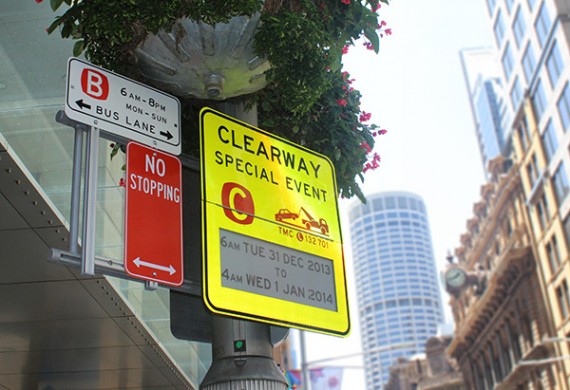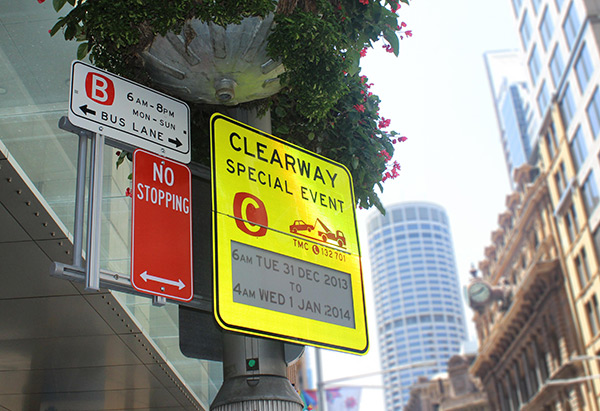
ePaper streets signs parked in Sydney
Before we hop into a waiting driverless Google car for our commute, there’s still plenty of room for improvement in the daily trip to the salt mines. To improve the driving experience, apps are already announcing traffic updates and suggesting alternative, congestion-free routes to drivers, with some electronic road signs functioning in a similar way.
To improve daily transit and simplify road sign deployment, the Australian Road & Maritime Services (RMS) has installed e-paper traffic signs on Sydney roads, representing the first time that electronic ink, a technology best known from e-book readers and smart watches, has been used in traffic signage.
The technology comes from Slovenian digital signage company Visionect and will significantly help cut the costs of changing road signs to reflect upcoming events.
The e-ink displays look much like the screen on a Kindle, and have the advantage of being easy to read in bright sunlight. The devices are also powered via solar panels, so are self-contained and low-cost to run.
Messages to the screen can be updated remotely via smartphone or PC, and opens up traffic management to the Internet of Things (IOT) world.
Rok Zalar, Visionect’s head of product development, explains how it works: “The hardware components are managed by server software programmed to ‘wake up’ the sign for certain pre-scheduled windows of time when the content on the sign will be changed using 3G technology. Outside of the ‘waking’ time, the traffic signs use no power.”
In addition to saving energy, the fully customisable e-traffic signs help cities save on temporary road sign placement. It has been reported, for example, that the city Los Angeles puts up 558,000 temporary parking restrictions signs every year at a cost of $9.5 million.
To further optimise and protect the electronic traffic signs, detection of location coordinates and tamper attempts has been developed, enabling road services to react quickly should any of the signs be damaged for whatever reason. For better night-time visibility, the signs’ front panel light is triggered when it gets too dark for drivers to be able to read the signs.
Visionect: www.visionect.com

